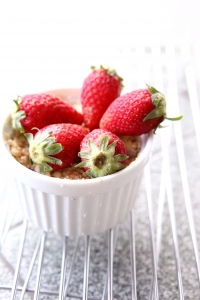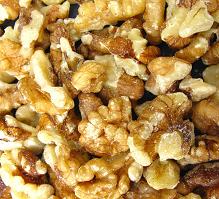What better way to eat light than a cool salad? Whether you prefer the crispness of spinach and water chestnuts or the sweetness and bright colors of a fruit mix, you’ll be satisfied and happy with a salad.
A salad should never be boring, and while you can simply toss some greens with some chicken and cheese, try some of these flavor additions:
Bacon bits
Mushrooms
Sunflower or pumpkin seeds
Raisins
Cranberries
Freshly ground pepper
Sea salt
Almonds
Following are some of our favorite recipes. Enjoy! To make any of these salads a meal, add protein in the form of eggs, meat, tofu, cheese, or Greek yogurt.
(Recipes from www.simplyrecipes.com)
Asian Tuna Salad
Prep time: 20 minutes
INGREDIENTS
10-12 ounces of canned white albacore tuna packed in water, drained
8-10 small radishes, cut into wedges
1 large carrot, shredded
1 clove garlic, smashed and minced
1 tsp minced ginger
½ to 1 serrano chile, seeded and minced (taste for heat and adjust, can also sub some chili pepper flakes)
2 Tbsp vegetable oil
1 tsp dark sesame oil
3 Tbsp seasoned rice vinegar (or plain rice vinegar with a teaspoon of sugar)
Salt and black pepper to taste
2 Tbsp chopped cilantro
1 whole green onion, chopped
Optional: 8 ounces (dry) soba noodles* or fresh lettuce
*If mixing in with soba noodles, cook soba noodles according to package directions, and rinse with cold water.
Place the drained tuna, radishes, shredded carrot, garlic, ginger, chile, vegetable oil, dark sesame oil, and rice vinegar in a large bowl. Gently toss to combine. Add salt and pepper to taste. Refrigerate until ready to serve.
When ready to serve, stir in the chopped cilantro and green onion.
Serve with lettuce, or mixed in with cold, cooked soba noodles.
Black Bean Salad Recipe
Make sure to rinse and drain the beans, if you are using canned beans.
INGREDIENTS
1 (15 ounce) can of black beans, thoroughly rinsed, and drained (or 1 1/2 cup of freshly cooked black beans)
1 ½ cups frozen corn, defrosted (or fresh corn, parboiled, drained and cooled)
½ cup chopped green onions or shallots
2 fresh jalapeño peppers, seeded and minced, or 1 whole pickled jalapeño pepper, minced (not seeded)
3 fresh plum tomatoes, seeded and chopped
1 avocado, peeled, seeded, and cut into chunks
½ cup fresh chopped cilantro
¼ cup fresh chopped basil
2 Tbsp lime juice (about the amount of juice from one lime)
1 Tbsp olive oil
½ to 1 teaspoon of sugar (to taste)
Salt and pepper to taste
In a large bowl, combine the beans, corn, onions, jalapeno chile peppers, tomatoes, avocado, cilantro, basil, lime juice, and olive oil.
Add sugar and salt and pepper to taste. (The sugar will help balance the acidity from the tomatoes and lime juice.) Chill before serving.
Chickpea (Garbanzo Bean) and Tomato Salad Recipe
Prep time: 20 minutes
INGREDIENTS
2 15-ounce cans of garbanzo beans (chickpeas), drained and rinsed
4 tomatoes (about 2 lbs.), cored and chopped
4 large hard-boiled eggs, peeled and chopped
2 cups of chopped sweet onion (Vidalia, Walla Walla, or another variety)
2/3 cup extra-virgin olive oil
6 Tbsp of white wine vinegar or sherry vinegar
1 tsp salt
Freshly ground pepper
Chopped parsley for garnish
Combine the garbanzo beans, tomatoes, eggs, and onion in a large bowl.
Separately mix the dressing ingredients in a jar or a small bowl – olive oil, vinegar, salt, and pepper. Pour over salad ingredients. Sprinkle on chopped parsley. Serve immediately.
You can chill the undressed salad up to six hours, until ready to serve.
Persimmon Pomegranate Fruit Salad Recipe
INGREDIENTS
3 fuyu persimmons, peeled, chopped (1/4 to 1/2 inch pieces), seeds (if any) discarded
¾ cup pomegranate seeds
1 Granny Smith or Fuji apple, peeled, cored, chopped (1/4 to 1/2 inch pieces)
7-10 leaves fresh mint, thinly sliced crosswise (stack them, then roll them up like a cigar and take slices from the end)
2 tsp lemon juice
1 tsp honey
Gently toss all of the ingredients together.
Keeps for at least a couple of days in the refrigerator, but best eaten same day it is made.















